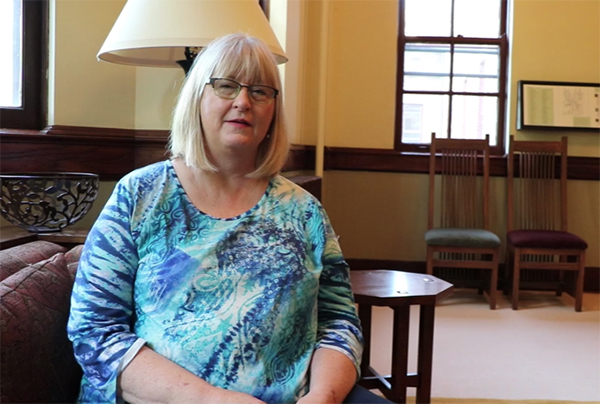Reducing Stress for Teachers: An Interview with Tish Jennings

Dr. Tish Jennings is an Associate Professor of Education at the Curry School of Education at the University of Virginia. She is an internationally recognized leader in the field of social and emotional learning with a specific emphasis on teacher stress and how it impacts the social and emotional context of the classroom and student learning. As Senior Director of the Initiative on Contemplative Teaching and Learning at the Garrison Institute, Dr. Jennings lead the faculty team that developed the Cultivating Awareness and Resilience in Education (CARE for Teachers), a mindfulness-based program for teachers designed to reduce stress and promote improvements in classroom climate and student academic and behavioral outcomes.
We caught up with Dr. Jennings at the recent CARE for Teachers Summer Retreat at the Garrison Institute.
We knew that the CARE program was good for teachers, but there is new data that suggests that it’s also good for the students in their classrooms. Tell us about that.
We have done two major studies, but most recently we have been working with 36 schools in New York City that are primarily located in the Bronx and Upper Manhattan. In this study, what we were really interested in was: If you improve teachers’ well-being and mindfulness does that translate into a better classroom? Does the classroom function better? Is the teacher able to manage their classroom better? Is the teacher able to provide better emotional support to their students?
We coded the teachers’ classrooms using a standardized measure of classroom environment. And we showed that the teachers who were randomly assigned to the CARE program improved in the areas of emotional support and classroom organization compared to the control group.
This is a really revolutionary finding because nobody has ever been able to move the classroom in this way simply by focusing on the teachers’ well-being and mindfulness. So this is a really important proof of concept. We have involved 224 teachers and over 5,000 students in elementary programs in the Bronx and Upper Manhattan. We are currently examining the student data to see if CARE has downstream effects on their behavior and learning.
Why do you think CARE for the teachers ends up helping the students?
One of the big findings that we see time and time again is that we are reducing what we’re calling “personal distress.” It’s a combination of depression, anxiety, burnout, and those variables of just general overall stress. We are seeing a significant reduction in that.
When you’re feeling distressed, it’s very hard to provide emotional support for others. When your buttons are getting pushed and you don’t have any skills for dealing with your own emotional experience, it’s easy to misinterpret student behavior, imagining that it’s intentional, and that increases that sense of distress. If a student is doing something you don’t like, and you think that they’re doing it intentionally, to bother you, it heightens that emotional reactivity. It also interferes with your relationship with that student.
When teachers are able to regulate themselves in those contexts, they can respond better to students who are doing things that they don’t want them to do, and that improves the classroom environment because students are more responsive and there’s less conflict between the students and the teacher. When that happens, the students are more engaged in learning, and they are more productive.
Do you advocate for mindfulness in the classrooms for students?
I think today it’s tricky to integrate mindfulness into the classroom for various reasons. One is that there is very limited time to do extra-curricular activities. However, one of the things I’m working on with my colleagues at the University of Virginia is a mindfulness-based health education program that would actually fit into the existing curriculum as a replacement for health and PE that meets the national standards for health and PE education.
So what we’ve done is we’ve looked at health education through the social-emotional learning lens, which involves self-awareness, self-management, social awareness, relationship skills and decision making. All of those elements of social-emotional learning are really great lenses to look at health in general. We include mindfulness, we include nutrition education and other practices, as a way of helping kids learn to regulate themselves not only emotionally but also physically. “Where’s my body in space? How do I balance myself? How do I notice the sensations of my body when I’m hungry or thirsty? And when I eat certain foods, how do I feel?”
There are a lot of other people doing mindfulness in other ways in schools, but I am very happy to be working on this particular project, because I feel it meets the schools’ needs more than any other project I’ve seen so far.
Interesting. What’s the project called?
The Compassionate Schools Project. It is the largest research study of a mindfulness-based program that’s ever been conducted. We’re going to be working with 50 schools in Louisville, Kentucky, to test this curriculum we’re developing in the elementary schools. This is particularly exciting in Louisville, Kentucky, because the mayor of Louisville, Greg Fischer, is a leader in the Compassionate Cities Movement. The Compassionate Schools Project is part of his flagship Compassionate Initiative for his city, so we’re really exited to be a part of that.
Next year’s CARE for Teachers Summer Retreat will take place at the Garrison Institute on August 1-5.
